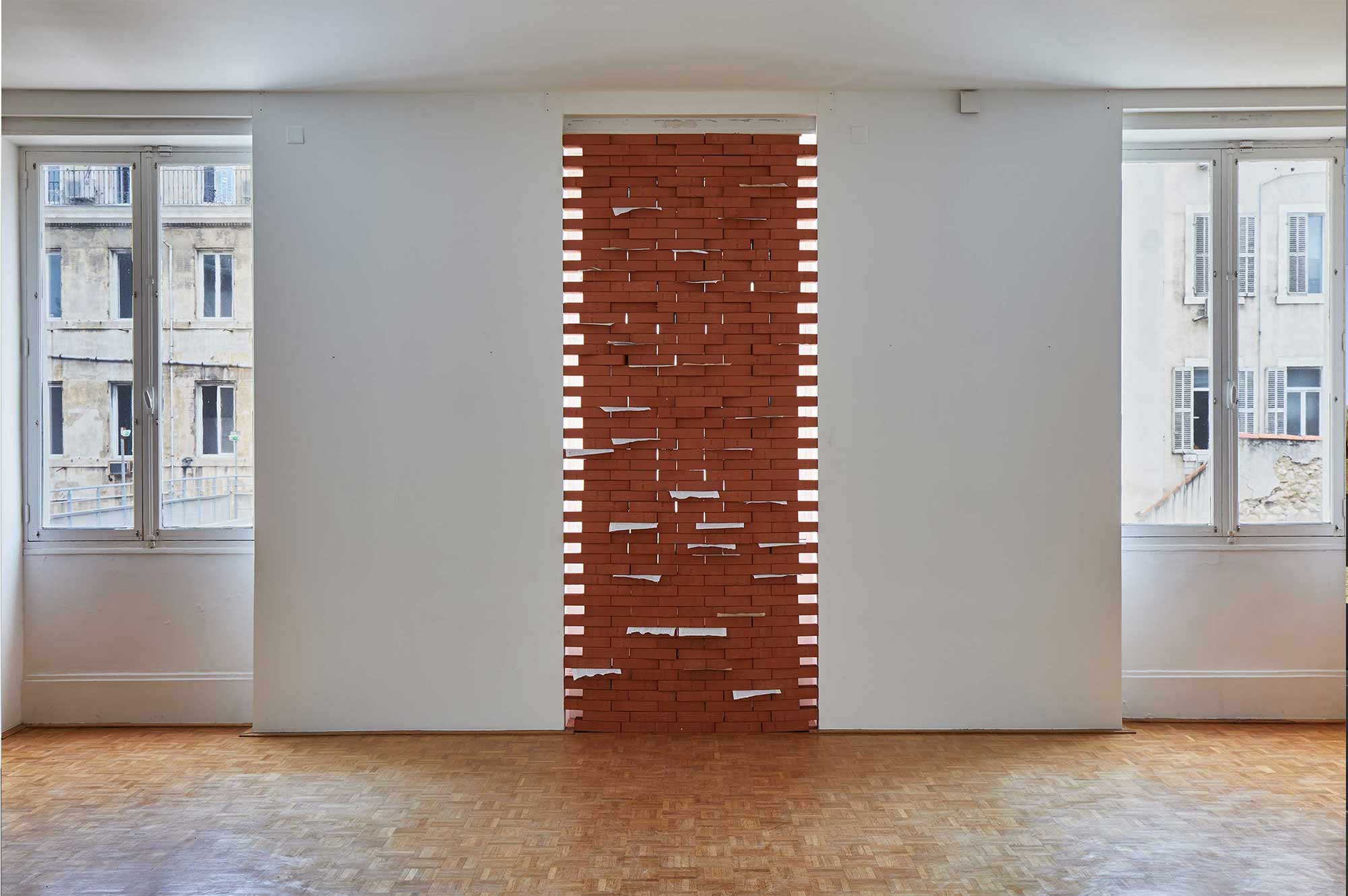Hannah Black (b. Manchester, UK), is an artist and writer living and working between London, UK and New York, US. Hannah Black’s work brings together two different scales: both individual/psychological and collective/historical formative experiences of class, race and gender. Her videos and installations combine details of her own or other people’s lives, such as a tooth implant or a role in a musical, with historical anecdotes and minutiae. The work is driven by a preoccupation with the limits and structures of relating, and influenced by communist and black radical traditions.
Hannah Black, Bastille, 2020
Bricks, pages from The 120 Days of Sodom by Marquis de Sade, 1785
Supported by Fluxus Art Projects
Courtesy of the artist and Arcadia Missa, London
Hannah Black, Ruin II, 2020
Paperback copy of The Black Jacobins. Toussaint-Louverture and the San Domingo Revolution by C. L. R. James, 1938, post-it note, pastel, plinth
Supported by Fluxus Art Projects
Courtesy of the artist and Arcadia Missa, London
Hannah Black, Oof, 2020
Oil on canvas
Supported by Fluxus Art Projects
Courtesy of the artist and Arcadia Missa, London
Hannah Black’s works bring together a cluster of events associated with the French Revolution as well as the concept of the autonomous artwork. On the day the Bastille was stormed, King Louis XVI wrote a single word in his diary: ‘rien’ (nothing). This can be seen as a sign of aristocratic indifference to proletarian activities, though it is more likely to have been a reference to that day’s hunt, in which the king killed nothing. Here, the word ‘RIEN’ appears as a six-foot tall painting based on Ed Ruscha’s famous painting Oof (1962). Hannah Black thus draws on two ideas central to Ruscha’s work: that art draws its power from a kind of semantic emptiness, and that this emptiness itself characterises everyday urban life.
Upon storming the Bastille, Arnoux de Saint-Maximin found a manuscript tucked into the walls of a prison cell. This text turned out to be the novel The 120 Days of Sodom by the Marquis de Sade – a scion of the aristocracy whose celebration of perversion ultimately cost him his class. Hannah Black’s Bastille playfully reconstructs this anecdote in brick and paper, evoking both the autonomy of minimalist sculpture (Carl Andre) and the prison cell. Opposite, Ruin II consists of a copy of CLR James’ seminal work The Black Jacobins. James’ book offers a broadly materialist history of the Haitian Revolution, which took place parallel to the revolution in France. By annotating the book with a post-it that reads ‘ruin’, Hannah Black not only points to the ambivalent fate of the only successful slave revolt in history – the colony of Saint-Domingue was one of the wealthiest in the western hemisphere, while the state of Haiti is now one of the poorest – but also the historical tendency to perceive social critique as a threat when it happens to be articulated by Black voices.










